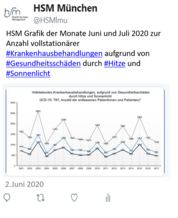A comparative study demonstrated that prevalence figures on multimorbidity require cautious interpretation when drawn from a single database.
| Autoren/Herausgeber: |
van den Bussche, H. Schäfer, I. Wiese, B. Dahlhaus, A. Fuchs, A. Gensichen, J. Höfels, S. Hansen, H. Leicht, H. Koller, D. Luppa, M. Nützel, A. Werle, J. Scherer, M. Wegschneider, K. Glaeske, G. Schön, G. |
|---|---|
| Erschienen: | 2013 |
| Publikationsart: | Articles in Refereed Journals (International) |
| ISBN/ISSN: | 0895-4356 |
| erschienen in: | J. Clin. Epidemiol. |
| Weitere Quellenangabe: | Volume 66(2), 209–217 |
Abstract
Objective
We investigated the degree of comparability of the prevalence of chronic diseases and disease combinations in the elderly in two databases comparable with regard to diseases included, sex and age of the patients (65–85 years), and cutoff score for case definition.
Study Design and Setting
One study is based on chart-supported interviews with the primary care physicians within a cohort study of 3,189 multimorbid elderly patients. The second study analyzed claims data from ambulatory care delivered to the multimorbid members of one German Health Insurance (n = 70,031). Multimorbidity was defined by the presence of three or more chronic conditions from an identical list of 46 diseases.
Results
The difference of the median number of chronic conditions was 1 (mean 6.7 vs. 5.7). The prevalences of individual conditions were approximately one-third lower in the claims data, but the relative rank order corresponded well between the two databases. These relatively small prevalence differences cumulate when combinations of chronic conditions are investigated, for example, the prevalence differences between the two databases increased to nearly 100% for triadic combinations and nearly 170% for quartets.
Conclusion
The study shows that conclusions regarding the prevalence of combinations of diseases should be drawn with caution when based on a single database.





